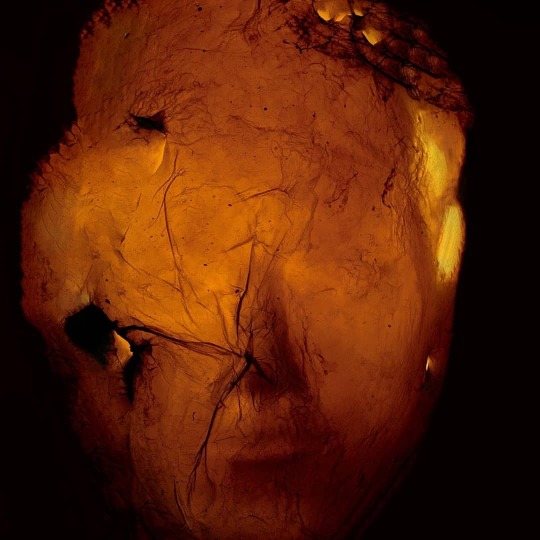#mabsociety
Explore tagged Tumblr posts
Photo

Chen Zhen, Eternal Ephemera/ Body-Mind2 at BANK Shanghai #chenzhen #bankgallery #mabsociety #shanghaiart #contemporaryart #artchina @chenzhen @bankmabsociety #randianmagazine (at Bank Gallery) https://www.instagram.com/p/CH60_40FLqL/?igshid=1m3v9g6u1yh5g
0 notes
Photo

P6 from Lianhuanhua (Comic Book), Polit-Sheer-Form Office , Hong Hao, Xiao Yu, Song Dong, Liu Jianhua, Leng Lin, 2005, MoMA: Drawings and Prints
Gift of BANK/MABSOCIETY Size: composition: 11 × 15 7/8" (27.9 × 40.4 cm); sheet: 14 1/2 × 20 3/16" (36.9 × 51.2 cm) Medium: Digital print with pencil additions
http://www.moma.org/collection/works/215857
7 notes
·
View notes
Photo







Outer Space by Michael Najjar http://www.michaelnajjar.com
Bank / MabSociety https://www.instagram.com/bankmabsociety/
21 notes
·
View notes
Photo




Chen Yujun
/mabsociety
http://www.mabsociety.com/chen-yujun.html
0 notes
Photo



Invocation for a Wandering Lake, Part II (2016) opens the show with the roar of desert winds and noticeable absence of water. Projected onto cardboard panels standing in an irregular zigzag formation, like a map being unfolded, the video then cuts to Chang scrubbing the rusted hull of an abandoned boat resting on the dried floor of Uzbekistan’s shrinking Aral Sea—a result of the Soviet Union’s irrigation projects in the 1960s. Directly contrasting this arid landscape, a second video installation Invocation for a Wandering Lake, Part I (2015) transports us to the coastline of Newfoundland, Canada, where we hear the tide lapping gently against a rocky shore. The carcass of a dead sperm whale floats on the screen. Chang performs a ritualistic washing of the whale’s body, which she describes as being prompted by emotion: “My sense of mortality was overwhelming. It was a sense of sorrow, an indescribable emptiness.” Part I explores an intimately personal connection to the natural world just as Part II investigates the greater human impact on the environment.
Patty Chang’s “The Wandering Lake, 2009 - 2017” at the Queens Museum
#my writing#art review#patty chang#the wandering lake#asian american artist#art#photography#environment#uzbekistan#aral sea#newfoundland#canada#china#asia#queens museum#nyc#artasiapacific
3 notes
·
View notes
Text
Asian Galleries To Check Out In Art Basel's Online Viewing Rooms — Tatler Hong Kong
Asian Galleries To Check Out In Art Basel’s Online Viewing Rooms — Tatler Hong Kong
Read more at Tatler Hong Kong
— by Oliver Giles: More than 4,000 works of art are being exhibited in Art Basel’s Online Viewing Rooms—here’s what some of Asia’s top galleries are showing…
Image courtesy of Bank Mabsociety and Tianzhuo Chen
View On WordPress
0 notes
Video
vimeo
Spatial Bodies: Hong Kong & Shenzhen (short teaser version.) from AUJIK on Vimeo.
The video depicts future architectural visions using AI and AR to deconstruct cityscapes. It suggest the possibility's to customize urban landscapes and to use as an open source software. It is influenced by the Japanese metabolism movement, The Situationist International, Lebbeus Woods and anti-architecture.
Premiere at Shenzhen Biennale of Urbanism\Architecture (UABB) 21 Dec 2019 - Spring 2020 at The Museum of Contemporary Art & Planning Exhibition (MOCAPE). Music by Daisuke Tanabe. Courtesy of AUJIK & BANK MABSOCIETY Gallery, Shanghai. Commissioned by Shenzhen Biennale of Urbanism\Architecture (UABB)
Dual video projection. Duration: 4:40 min.
Designboom article: designboom.com/art/hong-kong-shenzhen-architectural-organisms-aujik-video-12-28-2019/
0 notes
Video
vimeo
Spatial Bodies: Hong Kong & Shenzhen (short teaser version.) from AUJIK on Vimeo.
The video depicts future architectural visions using AI and AR to deconstruct cityscapes. It suggest the possibility's to customize urban landscapes and to use as an open source software. It is influenced by the Japanese metabolism movement, The Situationist International, Lebbeus Woods and anti-architecture.
Premiere at Shenzhen Biennale of Urbanism\Architecture (UABB) 21 Dec 2019 - Spring 2020 at The Museum of Contemporary Art & Planning Exhibition (MOCAPE). Music by Daisuke Tanabe. Courtesy of AUJIK & BANK MABSOCIETY Gallery, Shanghai. Commissioned by Shenzhen Biennale of Urbanism\Architecture (UABB)
Dual video projection. Duration: 4:40 min.
Designboom article: designboom.com/art/hong-kong-shenzhen-architectural-organisms-aujik-video-12-28-2019/
0 notes
Photo

Thanks for a delicious evening @mabsociety @bankmabsociety @legrandbainparis. Hope to see you next time @jupiternyc @zoeleeshoes! #paris #legrandbain #restaurant #bar #belleville #delicious (at Le Grand Bain)
0 notes
Photo

Lianhuanhua (Comic Book), Polit-Sheer-Form Office , Hong Hao, Xiao Yu, Song Dong, Liu Jianhua, Leng Lin, 2005, MoMA: Drawings and Prints
Gift of BANK/MABSOCIETY Size: overall (closed): 8 5/16 × 10 7/16 × 5/8" (21.1 × 26.5 × 1.6 cm) Medium: Artist's book
http://www.moma.org/collection/works/215397
4 notes
·
View notes
Photo

P5 from Lianhuanhua (Comic Book), Polit-Sheer-Form Office , Hong Hao, Xiao Yu, Song Dong, Liu Jianhua, Leng Lin, 2005, MoMA: Drawings and Prints
Gift of BANK/MABSOCIETY Size: composition: 11 1/8 × 15 7/8" (28.2 × 40.4 cm); sheet: 14 9/16 × 20 3/16" (37 × 51.2 cm) Medium: Digital print with pencil additions
http://www.moma.org/collection/works/215856
5 notes
·
View notes
Photo

P8 from Lianhuanhua (Comic Book), Polit-Sheer-Form Office , Hong Hao, Xiao Yu, Song Dong, Liu Jianhua, Leng Lin, 2005, MoMA: Drawings and Prints
Gift of BANK/MABSOCIETY Size: composition: 11 1/8 × 15 15/16" (28.2 × 40.5 cm); sheet: 14 1/2 × 20 1/16" (36.8 × 51 cm) Medium: Digital print with pencil additions
http://www.moma.org/collection/works/215862
11 notes
·
View notes
Photo

P1 from Lianhuanhua (Comic Book), Polit-Sheer-Form Office , Hong Hao, Xiao Yu, Song Dong, Liu Jianhua, Leng Lin, 2005, MoMA: Drawings and Prints
Gift of BANK/MABSOCIETY Size: overall (closed): 8 5/16 × 10 7/16 × 5/8" (21.1 × 26.5 × 1.6 cm) Medium: Artist's book
http://www.moma.org/collection/works/215855
1 note
·
View note